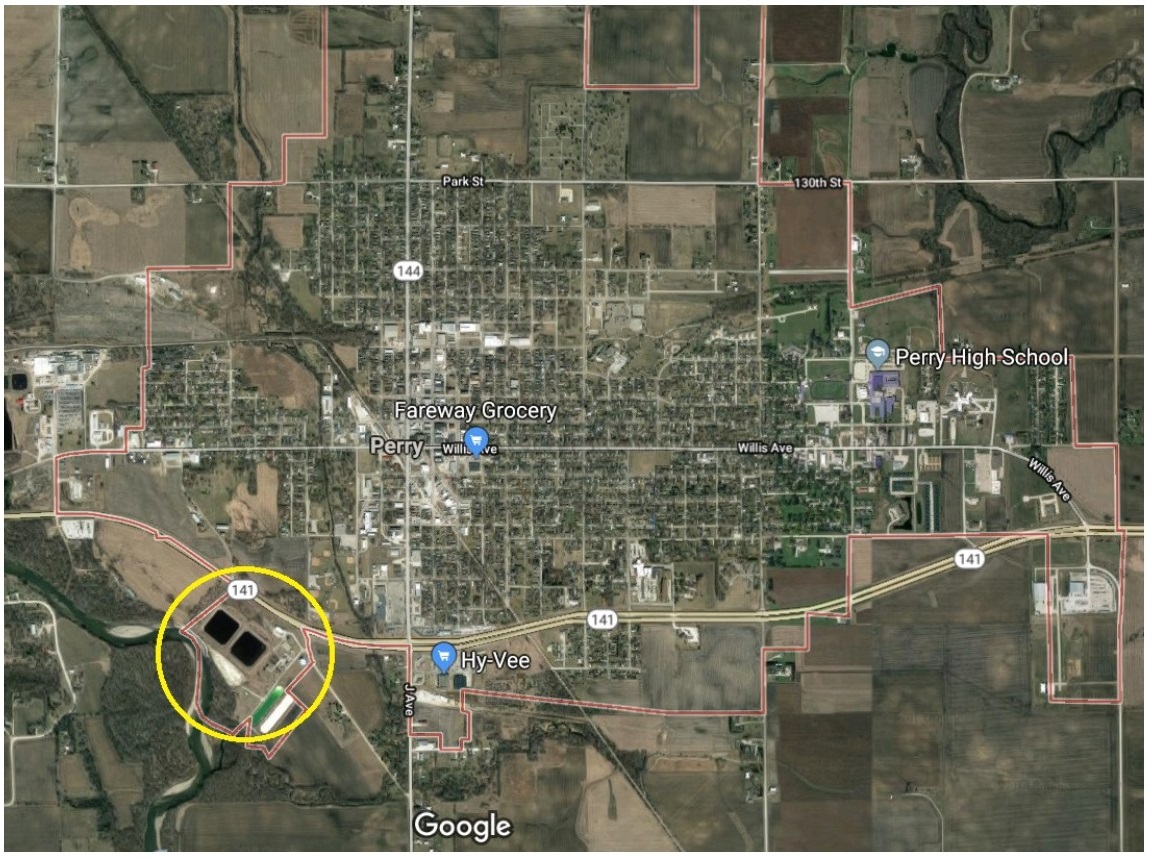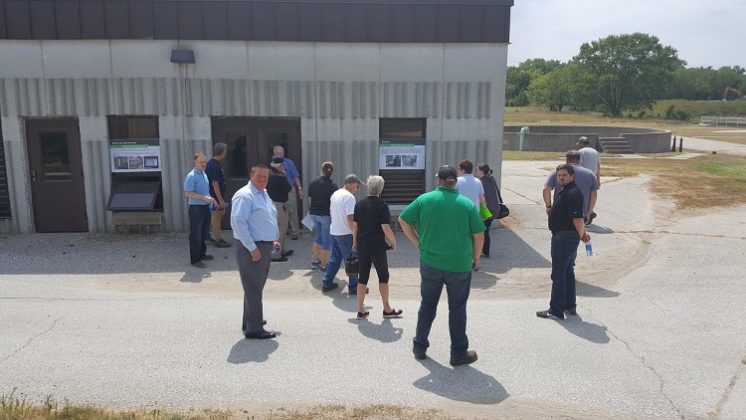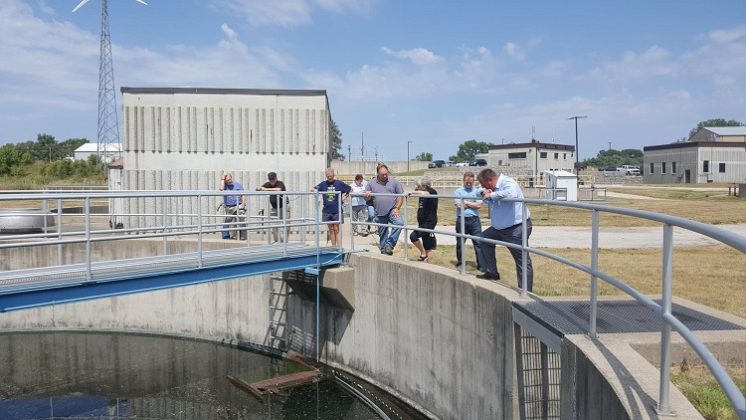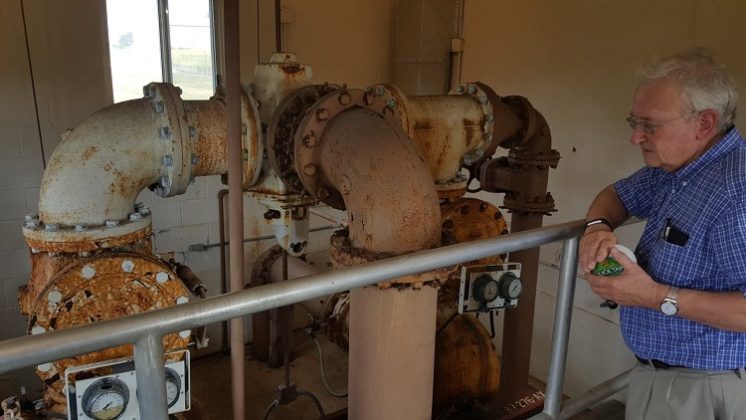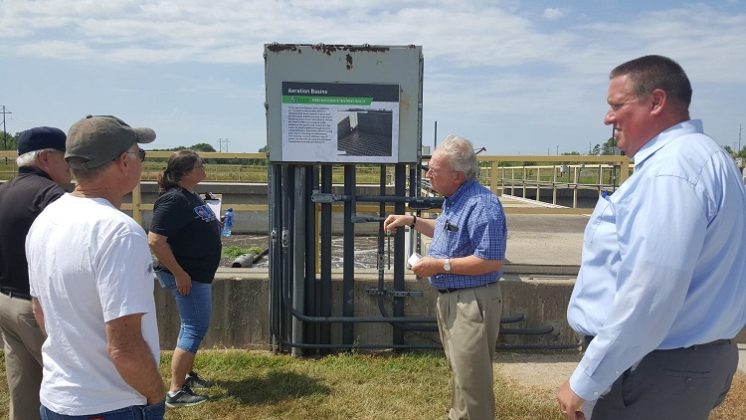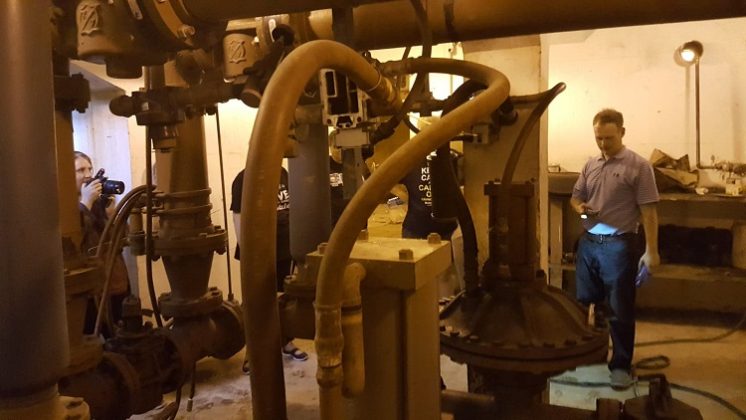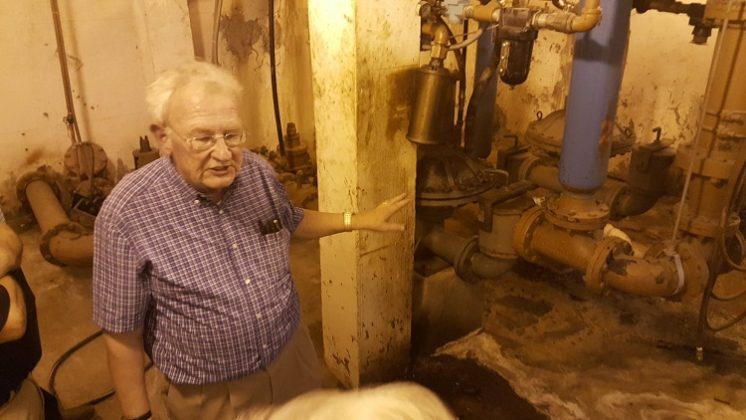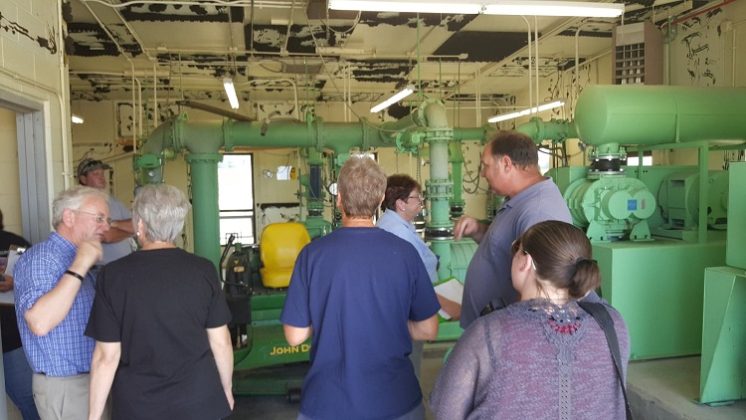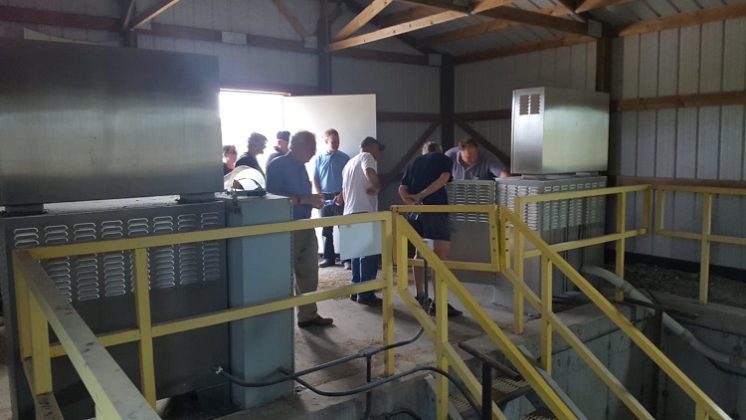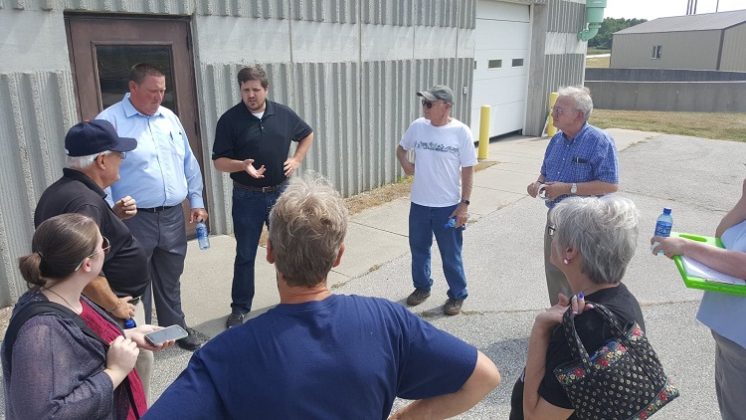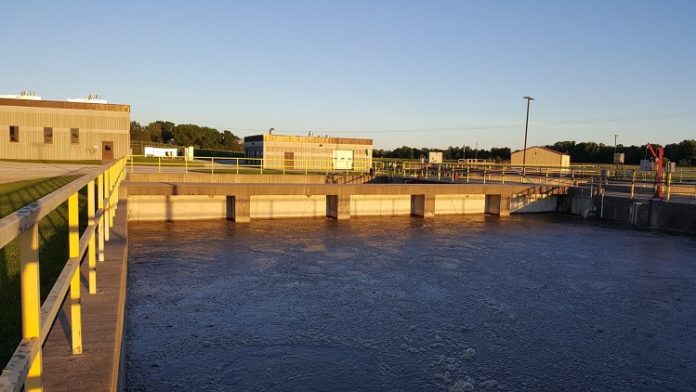
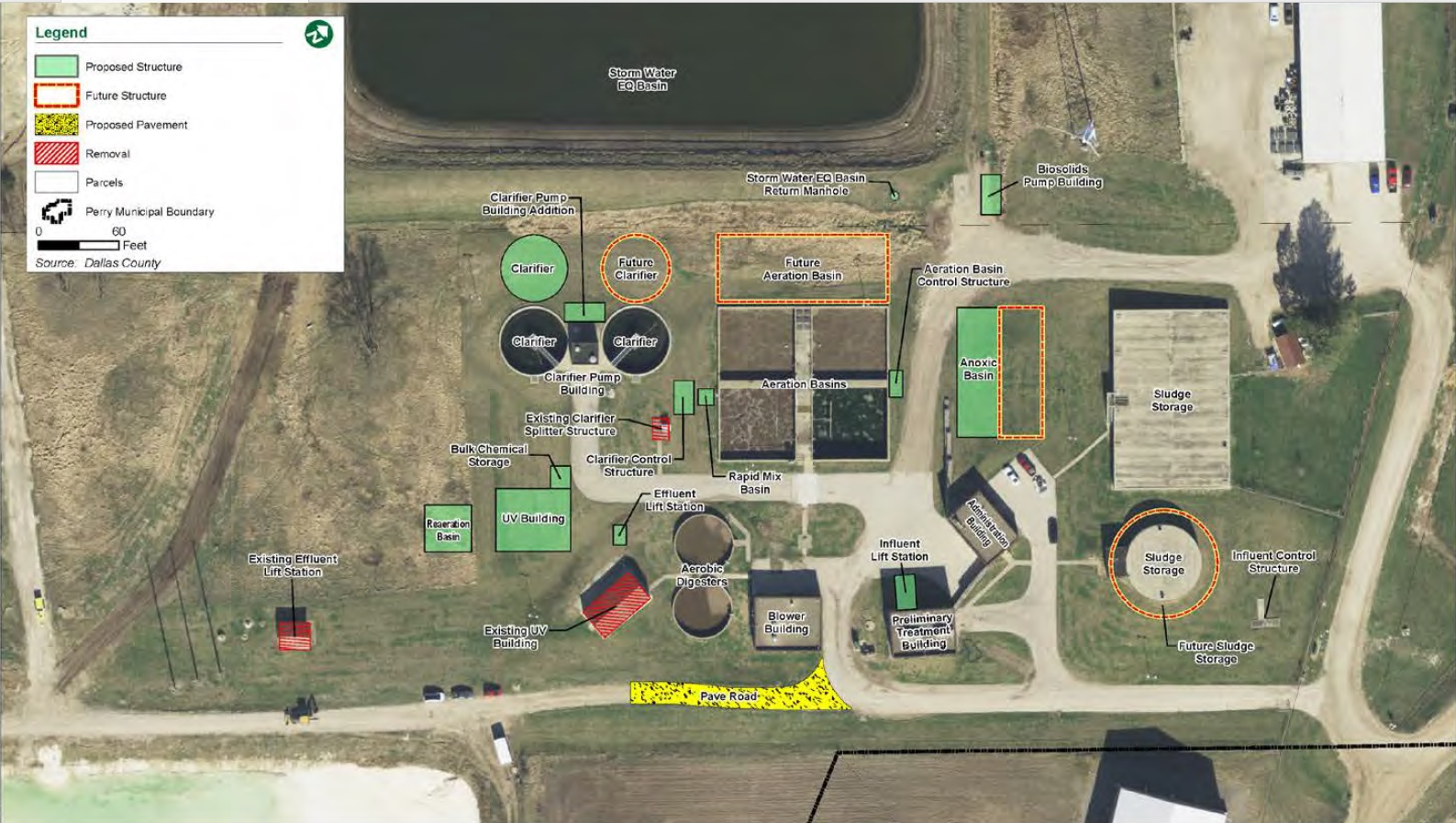
The Perry City Council approved Monday a $1.2 million agreement with Bolton and Menk, the city’s engineering consultants, to administer an $18 million improvement project for the Perry wastewater treatment plant.
The agreement is the latest step in a process that will see sanitary sewer bills more than double over the next six years for Perry householders, who pay about 90 percent of the city’s annual $950,000 in sewer revenues.
Under the terms of the professional-services agreement signed Monday, Bolton and Menk will design the sewer plant upgrades, manage their construction and also assist the city in seeking financing for the work.
The Perry wastewater facility last saw significant capital improvements in the early 1990s. Worn-out structures and ever-stricter pollution standards imposed by the Iowa Department of Natural Resources (DNR), particularly in the discharge of nutrients like ammonia, now make the costly upgrades necessary, according to city officials.
“When it takes three guys to open a valve, you know it’s time for some changes,” said Matt Ferrier, Perry’s Bolton and Menk engineering consultant. The plant was originally rated to treat a maximum of 2.9 million gallons a day during average wet weather, but current state standards require a treatment capacity of 5.2 million gallons a day.
Wastewater treatment is a complex biochemical process. Perry’s plant is an activated sludge system, a self-sustaining biological method that takes place in the presence of oxygen. By adding oxygen, the bacteria present in the sludge — called activated sludge — consumes organic matter and converts it into carbon dioxide.
The $18 million plan calls for the replacement or renovation of more than a dozen structures at the facility — from a new clarifier, anoxic basin and influent lift station to a new UV building, biosolids pump building and effluent lift station — and includes $2 million in improvements to the city’s sanitary sewer collection system, the underground pipes that bring the waste to treatment.
“Phosphorus and nitrogen are the new limitations coming up here that we’re concerned about,” said Gregory Sindt, the principal environmental engineer with Bolton and Menk who wrote the detailed facilty plan that led to the proposed Perry plant project. “That’s part of the plant upgrade is to remove total nitrogen and phosphorous.”
Nutrient pollution entering Iowa’s waterways make their way to the Gulf of Mexico and contribute to the hypoxic Dead Zone. According to the Iowa Nutrient Reduction Strategy, more than 90 percent of Iowa’s nutrient pollution is caused by agriculture, but the Iowa DNR imposes stricter discharge limits on municipal wastewater treatment facilities.
According to the preliminary estimates Bolton and Menk presented to the Perry City Council at a July 18 work session, about $15.6 million of the project’s $18 million cost could be financed through a loan from the Clean Water State Revolving Fund (CWSRF), with an additional $850,000 coming through a federal Community Development Block Grant (CDBG) and $1.7 million from the city’s cash on hand.
The CWSRF is jointly administered by the Iowa Department of Natural Resources (DNR) and the Iowa Finance Authority (IFA). About $5 million in CWSRF funds would be borrowed for 20 years and the other $10.5 million would be borrowed for 30 years. The loans would be repaid through higher sanitary sewer rates charged to the city’s customers.
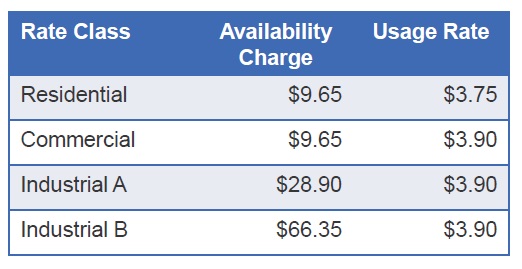
In other words, as Sindt and the other Bolton and Menk engineers put it at the July session, one of the project’s financing goals aims to “implement a planning process to annually adjust sewer rates as needed with a minimum of small inflationary increases.”
Currently, Perry’s four classes of sanitary sewer customers — residential, commercial, industrial A and industrial B — each pay both an availability charge and a usage fee on every monthly bill. The proposed financing schedule calls for both the availability charge and the usage fee to increase annually beginning in FY 2019 and ending in FY 2024.
About 91 percent of the city’s revenue from the sanitary sewer system comes from residential users, and about 9 percent of bills are paid by commercial customers. In terms of usage, about 82 percent of the treated sewage is produced by residential users and about 18 percent comes from commercial sources.
The availability charge for both residential and commercial customers would increase over the six years from the current charge of $9.65 a month to $25.65 a month — a $6-a-month increase in the first year and $2 a month in the suceeding five years. The monthly industrial A charge would increase from $28.90 to $76.90, and the industrial B from $66.35 to $177.35.
Usage rates would also climb. For residential customers, the usage rate would move from $3.75 for every 1,000 gallons of wastewater added to the sanitary sewer system to $5.69 for every 1,000 gallons. The commercial, industrial A and industrial B usage rates would grow from $3.90 to $5.91 for every 1,000 gallons used.
The sum total, for residential sewer customers, would see rates rise from the current $13.40 a month rise to $31.34 a month by 2024, an increase of 134 percent.
The increases in monthly rates and charges for all classes of sanitary sewer customers are shown in tabular form below:




What will Perry residents get for their $18 million? City council members received a first-hand look at where things stand and what the replacements and renovations will entail when they toured the wastewater treatment facility Aug. 1.
Dave Gliem, Perry’s water pollution control superintendent, has put in 20 years at the wastewater treatment facility and knows better than anyone how overdue many of the improvements are.
Sindt and Gliem led the tour along with Bolton and Menk engineers Ferrier and Andrew Sindt, Greg’s son. Touring the plant were Perry City Council members Dean Berkland, Vicki Klein, Dr. Randy McCaulley and Barb Wolling, with Perry City Administrator Sven Peterson, Perry City Clerk Paula Rychnovsky, Water Pollution Control Operator Jimmy Kezar, Perry Parks and Recreation Director John Anderson and Perry Public Library Director Mary Murphy rounding out the group.
According to records of the DNR, Perry’s U.S. Environmental Protection Agency National Pollutant Discharge Elimination System (NPDES) permit was issued by the Iowa DNR in 2005, and it expired in 2010.
